Exploring the Link Between Pancreatic and Lung Cancer
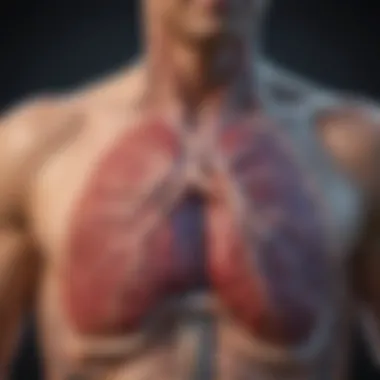

Article Overview
Purpose of the Article
The objective of this article is to thoroughly explore the connections between pancreatic cancer and lung cancer. Both are significant contributors to the cancer burden worldwide, carrying distinct characteristics yet displaying overlapping epidemiological trends, risk factors, and treatment challenges. Through a detailed analysis, we aim to bridge knowledge gaps regarding these conditions, facilitating a better understanding of their interplay and the implications for patient care. By providing relevant insights, our goal is to enrich the scientific conversation surrounding these malignancies and to promote awareness among healthcare professionals and interested readers alike.
Relevance to Multiple Disciplines
The intersections of pancreatic and lung cancer are not restricted to oncology alone. This discourse evokes interest across various fields:
- Epidemiology: Understanding the risk factors common to both cancers can enhance public health strategies aimed at prevention.
- Pharmacology: Advances in treatment often rely on converging research, exploring which therapies might be effective across different cancer types.
- Surgical Oncology: Surgeons must grasp the intricacies of coexisting cancers to develop comprehensive treatment plans.
- Psycho-oncology: Addressing the psychological burden on patients diagnosed with one or both cancers is pivotal for holistic treatment strategies.
Engaging with these intersections provides vital insights across disciplines, enriching our approaches to treatment, research, and patient care.
Research Background
Historical Context
The journey to understand pancreatic and lung cancer is both complex and revealing. Early research predominantly focused on lung cancer, notably post-World War II, as smoking gained prominence and its link to lung cancer was established. Pancreatic cancer, conversely, has lagged in research attention, partly due to its late-stage presentation and poor prognosis. In recent decades, however, there has been a notable surge in studies regarding both types of cancer, facilitated by advanced imaging techniques and molecular biology. These advancements have sparked a greater focus on the commonality of symptoms and treatment pathways, marking a pivotal shift in cancer research.
Key Concepts and Definitions
To engage fully with the nuances of these diseases, it is essential to establish some foundational terms:
- Pancreatic Cancer: Often recognized for its aggressive nature, pancreatic cancer arises in the tissues of the pancreas, frequently diagnosed in advanced stages. Symptoms, including jaundice and unexplained weight loss, make early detection challenging.
- Lung Cancer: This type of cancer starts in the lungs and can be categorized generally into small cell and non-small cell cancer. It is notorious for being diagnosed at an advanced stage, leading to poor survival rates despite treatment advancements.
- Epidemiology: The study of distribution and determinants of health-related states, such as cancers, in specified populations.
These definitions provide a foundation for further exploration of the intersection between these two significant health challenges.
Preface to Pancreatic and Lung Cancer
The nexus between pancreatic cancer and lung cancer presents a complex landscape in the realm of oncology, where commonalities and divergences intermingle. Understanding this connection isn’t merely academic; it bears real implications for diagnosis, treatment protocols, and patient quality of life. Both types of cancer constitute significant health challenges globally, making their study imperative for scientists, healthcare practitioners, and the general public.
The importance of dissecting the intersections of these cancers lies in their unique presentation and biological behavior. Patients diagnosed with either cancer often share a constellation of symptoms that can complicate early detection and treatment. Furthermore, their overlapping risk factors — from environmental triggers to genetic predispositions — warrant closer examination.
By exploring how these malignancies interact, we can glean insights that are beneficial not only for research but also for clinical practice. In essence, this section will set the stage for an in-depth discussion of what pancreatic and lung cancers are, the statistics surrounding each, and the crucial distinctions that guide treatment strategies.
Defining Pancreatic Cancer
Pancreatic cancer arises from abnormal growth of cells within the pancreas, an organ that plays a vital role in digestion and metabolic regulation. The most common form, adenocarcinoma, represents about 90% of cases. Characterized by its stealthy progression, pancreatic cancer is often termed the "silent killer" due to the minimal symptoms it presents in its early stages. When symptoms do finally manifest, they might include abdominal discomfort, weight loss, jaundice, and changes in appetite. This insidious nature contributes to its poor prognosis, often making it too late for effective intervention when it is finally diagnosed.
The complexity of this cancer further stems from its association with specific genetic syndromes, such as hereditary breast and ovarian cancer syndrome and Li-Fraumeni syndrome. Additionally, lifestyle choices, such as tobacco use and obesity, also elevate the risk, outlining the need for increased awareness and early screening in high-risk populations.
Defining Lung Cancer
Lung cancer stands as one of the leading causes of cancer-related death worldwide, primarily categorized into two main types: non-small cell lung cancer (NSCLC) and small cell lung cancer (SCLC). NSCLC is more prevalent, making up about 85% of lung cancer cases. Symptoms such as a persistent cough, chest pain, and unexplained weight loss are commonly reported — but much like pancreatic cancer, symptoms may not surface until the latter stages of the disease.
Environmental factors, notably smoking, are pivotal contributors to lung cancer risk. However, other environmental exposures, such as radon gas and asbestos, also play a sinister role. Moreover, genetics can predispose individuals to developing lung cancer, indicating that both inherited traits and lifestyle factors are crucial in assessing risk.
In summary, both pancreatic and lung cancers possess unique features that influence their diagnosis, treatment, and patient management. Identifying these characteristics helps demystify their interconnected paths, paving the way for a better comprehension of their disease mechanisms and innovative treatment strategies.
"Understanding the nuances of both cancers is vital for tailoring effective intervention strategies, ultimately improving patient outcomes."
"Understanding the nuances of both cancers is vital for tailoring effective intervention strategies, ultimately improving patient outcomes."
The intersections of these malignancies not only spark scientific inquiries but also shed light on the broader implications concerning public health and patient care.
Epidemiology of Pancreatic and Lung Cancer
Understanding the epidemiology of pancreatic and lung cancer is crucial not only for clinicians and researchers but also for patients and their families. The statistics surrounding these cancers shed light on their prevalence and highlight the need for vigilant awareness and screening. Both cancers are notable for their high mortality rates and are often diagnosed in later stages, complicating treatment options. A detailed grasp of their epidemiological characteristics can lead to better prevention strategies, targeted research initiatives, and improved patient outcomes.
Prevalence and Incidence of Pancreatic Cancer
Pancreatic cancer is one of the deadliest forms of cancer, with its incidence steadily rising in some regions. In the United States, for instance, the estimate shows around 60,000 new cases of pancreatic cancer diagnosed annually. The lifetime risk of developing this cancer has been reported to be approximately 1 in 64. While the global burden is significant, the mortality rate closely mirrors the incidence; indeed, pancreatic cancer often becomes evident late in progression, primarily due to its ambiguous symptoms.
Why does this matter?
- Increased awareness of symptoms and risk factors might lead to earlier detection, which is crucial since the 5-year survival rate remains a flat 10%.
- The elevated rates in certain demographics, such as older adults or individuals with a family history, add urgency to preventive approaches and research.
The incidence may vary by geographic location and ethnicity, suggesting the influence of environmental and genetic factors. According to the American Cancer Society, African Americans are notably at a higher risk than other racial groups for developing pancreatic cancer, which necessitates tailored public health strategies to address these disparities.
Prevalence and Incidence of Lung Cancer
Lung cancer remains the leading cause of cancer-related deaths globally, surpassing even breast and prostate cancers. Annually, over 230,000 new cases are diagnosed in the United States alone. The incidence showcases a more complex picture; while smoking remains the primary risk factor, non-smokers are also increasingly diagnosed, indicating shifting environmental influences and genetic predispositions. The most prevalent type, non-small cell lung cancer, accounts for approximately 85% of cases.
Key considerations:
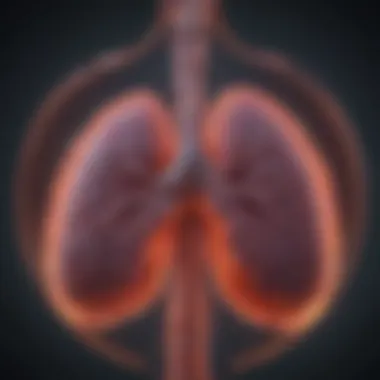
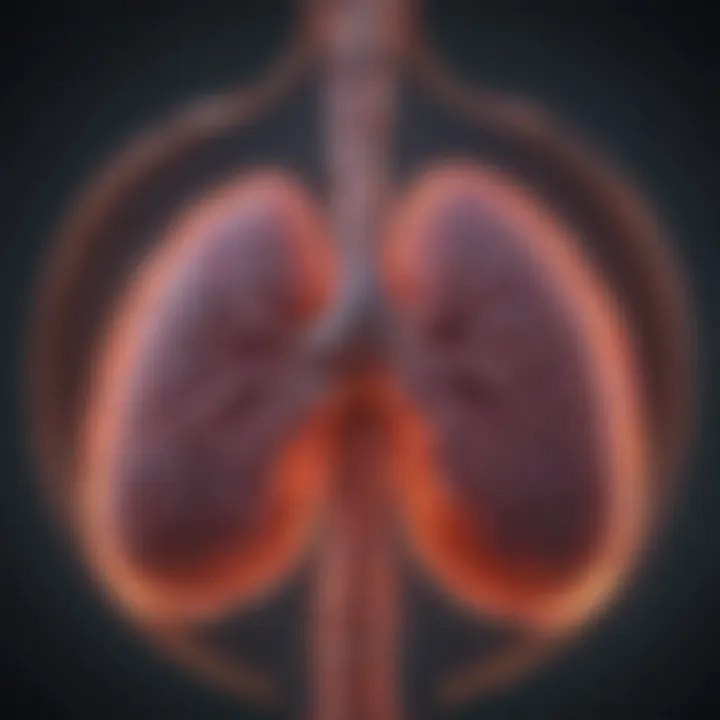
- Trends show that lung cancer rates have begun to decline among men, likely due to a decrease in smoking habits, yet they remain stubbornly high among women.
- Disparities exist across different regions and socio-economic backgrounds, with lower access to healthcare correlating with higher mortality rates.
Moreover, the survival rates for lung cancer vary widely depending on stage at diagnosis, underscoring the imperative for education on early warning signs and symptoms. It is believed that public awareness campaigns could influence smoking rates, especially among vulnerable populations.
"Epidemiological data is crucial for understanding not just the battles fought against these diseases but also the factors that lead to their rise. Investing in research and treatment is vital."
"Epidemiological data is crucial for understanding not just the battles fought against these diseases but also the factors that lead to their rise. Investing in research and treatment is vital."
The intersection of pancreatic and lung cancer’s epidemiology reveals shared risk factors, which could lead to breakthroughs in research and treatment modalities. Being cognizant of these cancer trends can ultimately lead to better public health decisions, research funding, and supportive legislation.
Risk Factors Associated with Both Cancers
Understanding the risk factors associated with pancreatic and lung cancer is crucial for those engaged in the study and treatment of these diseases. By identifying these factors, researchers can gain valuable insights into preventive measures and develop targeted therapies. Moreover, it allows for a deeper exploration of the intricate interplay between genetics, the environment, and lifestyle choices. In this section, we will explore three key categories: genetic predispositions, environmental exposures, and lifestyle factors.
Genetic Predispositions
Genetic predispositions play a significant role in the likelihood of developing both pancreatic and lung cancers. Using genetic screening tools, medical professionals can identify individuals at risk based on their family history and genetic markers. For instance, mutations in genes such as BRCA2 and PALB2 are linked to increased risks for pancreatic cancer, while mutations in genes like EGFR can influence lung cancer susceptibility.
The importance of understanding these genetic links cannot be overstated. Knowing your genetic risk may lead to more stringent screening processes or preemptive measures. For example, someone with a strong familial history of pancreatic cancer might benefit from annual imaging consultations. In many cases, advances in genetic testing allow health professionals to provide tailored advice.
"An individual’s genetic makeup is a compass pointing towards potential health destinies, leading us to understand how deeply intertwined our biology is with disease risk."
"An individual’s genetic makeup is a compass pointing towards potential health destinies, leading us to understand how deeply intertwined our biology is with disease risk."
Environmental Exposures
Numerous environmental factors contribute to the development of pancreatic and lung cancers, showcasing the significant impact of one’s surroundings on health. Common environmental exposures include occupational hazards such as exposure to certain chemicals or pollutants. For instance, living near construction sites may increase exposure to asbestos, a known carcinogen associated with lung cancer.
Moreover, studies have shown that air pollution is not just a nuisance for city dwellers; chronic exposure can lead to serious conditions, including lung cancer. Similarly, exposure to pesticides and industrial chemicals has been linked to higher rates of pancreatic cancer. The relationship between environmental factors and these diseases is complex and multifaceted, making it essential for researchers to continue exploring how these elements interact with genetic predispositions.
Lifestyle Factors
Lifestyle choices can either contribute to or mitigate the risk of developing pancreatic and lung cancers. Smoking remains the most significant risk factor for lung cancer, accounting for about 85% of cases. The toxic substances in tobacco damage lung cells, leading to carcinogenic changes. It's important to note that secondhand smoke poses a risk as well, particularly for non-smokers who live with smokers.
On the other hand, for pancreatic cancer, the connection with lifestyle choices is equally significant. Factors such as obesity, poor diet, and lack of physical activity voice their influence starkly. Excessive body weight can lead to chronic inflammation and insulin resistance, creating favorable conditions for cancer development. Additionally, a diet high in red and processed meats is linked to a higher risk.
In light of this evidence, promoting healthier lifestyle changes emerges as a vital strategy for cancer prevention. Engaging in regular exercise, maintaining a balanced diet, and eschewing tobacco are proactive steps to mitigate risks associated with both pancreatic and lung cancers.
Pathophysiology of Pancreatic and Lung Cancer
Understanding the pathophysiology of pancreatic and lung cancer is essential as it lays the groundwork for treatment strategies and informs ongoing research. Exploring this section reveals the cellular and molecular changes associated with these malignancies, providing insights into why they proliferate and how they evade the body's defenses. The interplay of genetic mutations, environmental factors, and biological behaviors of tumors highlights the complexity of these cancers. Such information is critical for developing targeted therapies and improving patient outcomes.
Molecular Mechanisms in Pancreatic Cancer
The molecular mechanisms underlying pancreatic cancer are diverse and multifaceted. One key player is the KRAS gene, which is mutated in roughly 90% of pancreatic cancers. This mutation drives abnormal cellular growth and division, leading to tumor formation. The activation of KRAS influences several downstream pathways, including those involving MAPK and PI3K, both of which contribute to tumor aggressiveness.
Additionally, other mutations can occur in tumor suppressor genes, such as TP53 and CDKN2A. These mutations disrupt normal cell cycle regulation, allowing damaged cells to proliferate unchecked. The pancreas is naturally a low-oxygen environment, and tumors often adapt to this condition through mechanisms like angiogenesis, where they form new blood vessels to secure necessary nutrients. This adaptive trait complicates treatment, as it fosters a resistant cancer phenotype.
In summary, the molecular landscape in pancreatic cancer is complex. With genetic mutations collaborating to promote tumorigenesis, researchers are increasingly focused on targeting these specific pathways in therapy development. By doing so, there is hope for more successful interventions against this often-deadly disease.
Molecular Mechanisms in Lung Cancer
Much like pancreatic cancer, lung cancer displays a range of molecular mechanisms that contribute to its pathogenesis. Central to lung adenocarcinoma, which is a common subtype, is the activation of the EGFR gene. Mutations in this gene lead to constant signaling for cell division, a hallmark of cancer progression. Moreover, ALK gene rearrangements are also noticeable in several lung tumors, presenting a distinct target for therapy.
Beyond mutations, the role of the tumor microenvironment cannot be understated. In lung cancer, immune evasion tactics seem particularly pronounced. Tumors can secrete hormones and other proteins that suppress immune responses, creating a challenging landscape for therapy. The involvement of immune checkpoint proteins, such as PD-1 and CTLA-4, further complicates treatment efforts, as these proteins inhibit T-cell activity against the tumor.
Furthermore, the carcinogenic effects of cigarette smoke introduce a multitude of damage to the DNA, increasing mutation rates and deeply affecting cellular pathways. Thus, the confluence of genetic mutations and environmental exposures showcases the intricate nature of lung cancer's pathophysiology.
In sum, the molecular mechanisms behind lung cancer underscore the need for tailored therapies that target specific aberrances within individual tumor profiles. Such precision in approach is necessary to combat the high morbidity and mortality associated with lung cancer.
Symptoms and Diagnosis
Understanding the symptoms and diagnosis of pancreatic and lung cancer is crucial for timely intervention and effective treatment. Both cancers often share vague and non-specific symptoms which can complicate early detection. This section delves into common symptoms, diagnostic techniques, and the pivotal role these factors play in managing patient outcomes. Knowing what to watch for can empower patients, families, and healthcare providers alike. Every minute counts in cancer care; thus, comprehending the nuances of symptoms and diagnostic methods directly impacts survival rates and quality of life.
Common Symptoms of Pancreatic Cancer
Pancreatic cancer often flies under the radar. Many symptoms can be mistaken for less serious ailments. Here are some frequent signs to be aware of:
- Abdominal Pain: This pain might feel as if it's sneaking up slowly, usually starting in the upper abdomen and potentially radiating to the back.
- Jaundice: A yellowing of the skin and eyes often signals problems with liver function or bile ducts. It’s one of the more conspicuous signs.
- Unexplained Weight Loss: Dropping pounds without trying can raise red flags; this is especially true for pancreatic cancer.
- Changes in Appetite: Many patients experience a reduced desire to eat. This symptom often compounds with other issues, making it more serious.
- Nausea and Vomiting: Feeling queasy could stem from many causes, but combined with other symptoms, it warrants investigation.
These symptoms can signal a variety of conditions, not just cancer. Alertness is key—if they persist or worsen, seeking medical attention is essential.
Common Symptoms of Lung Cancer
Lung cancer symptoms can mimic other respiratory conditions, which can easily lead to delays in diagnosis. Here are points that shouldn't be ignored:


- Persistent Cough: A cough that remains consistent, especially one that changes in character, can be troubling.
- Coughing Up Blood: This is a serious symptom and should never be brushed aside.
- Shortness of Breath: Difficulty breathing, particularly during routine activities, can signify lung involvement.
- Chest Pain: Any pain that is persistent or worsening in the chest area deserves further investigation.
- Wheezing: Unexplained wheezing may indicate blockages in the airways, making breathing a challenge.
Just like pancreatic cancer, lung cancer symptoms require prompt attention and should never be allowed to fester.
Diagnostic Techniques for Pancreatic Cancer
When it comes to diagnosing pancreatic cancer, a variety of tools come into play. Here’s an outline of some of the common methods:
- Imaging Tests: Techniques such as CT scans and MRIs are crucial for visualizing the pancreas and assessing any suspicious masses.
- Endoscopic Ultrasound: This procedure employs sound waves to create images of the pancreas and can also help during biopsy.
- Biopsy: A definitive diagnosis often necessitates tissue sampling, which can be obtained through several methods, including fine-needle aspiration.
- Blood Tests: Certain markers may indicate complications or pancreatitis, but alone they are typically not sufficient for a definitive diagnosis.
The combination of these methods assists healthcare providers in forming a clearer picture of what is going on inside the body.
Diagnostic Techniques for Lung Cancer
Detecting lung cancer early can significantly improve treatment success. Below are pivotal diagnostic strategies:
- Chest X-rays: These are often the first line in evaluating lung issues, though they might miss smaller lesions.
- CT Scans: More detailed than traditional x-rays, CT scans help identify irregular growths with greater accuracy.
- Bronchoscopy: This technique allows direct visualization of the airway and enables biopsy for suspicious lesions.
- PET Scans: Useful in determining if cancer has spread, PET scans assess metabolic activity in tissues.
- Sputum Cytology: Analyzing mucus coughed up from the lungs can help identify cancerous cells.
Both pancreatic and lung cancers pose significant challenges in terms of diagnosis. Consequently, being proactive about monitoring symptoms and engaging in routine check-ups may uncover these diseases at a more treatable stage.
"Early detection is key, as both pancreatic and lung cancers typically present late, making awareness of symptoms all the more crucial."
"Early detection is key, as both pancreatic and lung cancers typically present late, making awareness of symptoms all the more crucial."
Treatment Modalities
Understanding treatment modalities for pancreatic and lung cancer is critical to navigating these complex diseases. Both cancers exhibit distinct biological behaviors and treatment responses, making it essential for healthcare professionals to tailor their approaches according to individual patient needs. Ultimately, the goal is to extend survival while maintaining the best possible quality of life for patients. This section will systematically explore surgical options, as well as chemotherapy and targeted therapies, highlighting their roles in managing these malignancies.
Surgical Options for Pancreatic Cancer
Surgery plays a pivotal role in the treatment of pancreatic cancer, particularly in its early stages when the tumor is localized and operable. The Whipple procedure, or pancreaticoduodenectomy, is one of the most common surgical approaches. This extensive operation involves the removal of the head of the pancreas, a portion of the small intestine, the gallbladder, and part of the bile duct.
- Benefits of the Whipple Procedure:
- It offers the possibility of a cure for eligible patients.
- It may enhance survival rates significantly compared to nonsurgical methods.
- It allows for the removal of local metastases that may be present.
However, because pancreatic cancer is often diagnosed at an advanced stage, the opportunity for surgery is limited. In cases where surgery is not an option, palliative procedures, such as bypass surgery to relieve biliary obstructions, can improve quality of life. Moreover, individual patient factors—like overall health and disease stage—heavily influence surgical outcomes.
Surgical Options for Lung Cancer
Lung cancer surgery primarily involves two main types: lobectomy and pneumonectomy. In a lobectomy, a lobe of the lung containing the tumor is removed, while a pneumonectomy requires the removal of an entire lung. Surgical interventions are typically most successful in the early stages of lung cancer, especially when it has not metastasized beyond the lungs.
- Considerations for Surgical Options:
- Lobectomy is generally preferred over pneumonectomy for preserving lung function.
- The mediastinal lymph nodes may also be removed to assess cancer spread.
- Patients must be evaluated for their lung function, as those with compromised respiratory capacity may not tolerate surgery well.
Patients may also explore video-assisted thoracoscopic surgery (VATS), a minimally invasive technique. This approach can lead to faster recovery times and less post-operative discomfort, ideal for some individuals. It's crucial that oncologists discuss the risks and benefits thoroughly with patients, considering both the likelihood of success and the impact on their overall well-being.
Chemotherapy and Targeted Therapy in Pancreatic Cancer
Chemotherapy is often a cornerstone of treatment for pancreatic cancer, especially in cases where surgical resection is not feasible. The FOLFIRINOX regimen, which includes a combination of drugs, has become a standard option for patients with good performance status. This dual approach potentially shrinks tumors prior to surgery or manages advanced disease.
- Benefits of Chemotherapy:
- It aims to reduce tumor size for surgical candidates.
- It can improve overall survival rates when combined with other treatments.
Targeted therapies, like the liposomal formulation of irinotecan (Onivyde), represent a newer approach, focusing on specific genetic mutations that may exist within the cancer cells. This emerging field holds promise for creating more personalized treatment plans for patients.
Chemotherapy and Targeted Therapy in Lung Cancer
In lung cancer, chemotherapy is crucial, especially for those with extensive-stage small cell lung cancer (SCLC). Common regimens often combine platinum-based drugs, such as cisplatin, with other chemotherapeutic agents. For non-small cell lung cancer (NSCLC), targeted therapies like EGFR inhibitors, including osimertinib, have transformed treatment landscapes, allowing some patients to experience prolonged remissions.
- Current Trends in Treatment:
- Immunotherapy, such as checkpoint inhibitors (e.g., nivolumab), is increasingly being integrated into treatment plans for lung cancer, promising more effective outcomes.
- Ongoing trials are focusing on sequencing combinations of therapies to maximize effectiveness with fewer side effects.
While chemotherapy and targeted therapies come with potential side effects, including fatigue, nausea, and increased susceptibility to infection, the impact on survival and quality of life cannot be overlooked. Continuous research is vital, paving paths for better treatment strategies that could one day lead to groundbreaking advances in cancer care.
Innovative Research and Future Directions
The landscape of cancer research is ever-evolving, particularly when examining pancreatic and lung cancer. There is considerable urgency for innovative research initiatives since both cancers present significant challenges in terms of early detection, management, and treatment efficacy. As the interaction between these two malignancies is becoming clearer, understanding the latest directions in research can provide hope for better patient outcomes and deeper knowledge of cancer mechanisms.
Current Studies in Pancreatic Cancer Research
Recent studies have focused on molecular profiling in pancreatic cancer. Researchers are exploring genetic markers that could not only improve diagnosis but also influence targeted therapy options. For instance, a study by the American Association for Cancer Research highlighted the role of the KRAS gene mutation, which is prevalent in over 90% of pancreatic cancers.
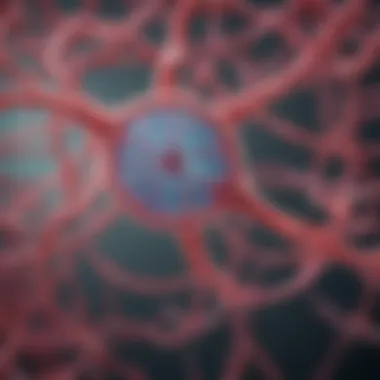
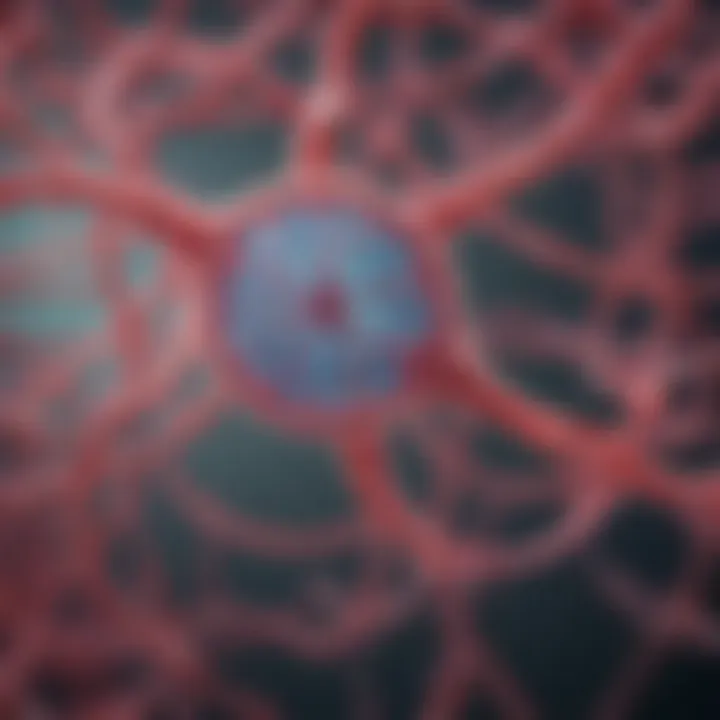
In correlation, clinical trials are exploring the use of specific inhibitors that target these genetic anomalies. By harnessing knowledge of individual patient’s genomic makeup, oncologists may be able to offer tailored treatment plans - leading to enhanced efficacy and potentially less toxicity.
- Key Areas of Study Include:
- Biomarkers for early detection
- Development of innovative surgical techniques, such as minimally invasive approaches
- Understanding the tumor microenvironment and its role in metastasis
Current Studies in Lung Cancer Research
Much like its pancreatic counterpart, lung cancer research is vigorously pursuing advances. Notably, research is focusing on the effects of environmental factors, such as air pollution and smoking, on lung cancer prognosis and survival. A recent meta-analysis has underscored how these elements correlate with genetic predispositions, which is crucial for devising preventive strategies.
Emerging research has also begun to investigate novel imaging techniques, which could allow for earlier diagnosis of lung tumors by utilizing advanced molecular imaging. This could radically change the timeline for treatment initiation and improve survival rates.
- For example:
- Studies are evaluating the potential of blood-based biomarkers for identifying lung cancer non-invasively
- Collaborative research across fields is generating insights on the effects of immunotherapy in lung cancer patients
Implications of Immunotherapy
Immunotherapy represents a beacon of hope in the treatment landscape for both pancreatic and lung cancers. By training the immune system to recognize and attack cancer cells, it opens new avenues for intervention that were previously unthinkable. Current research is emphasizing the potential of combining immunotherapy with traditional treatments like chemotherapy and radiation.
"Immunotherapy has changed the conversation in oncology, providing new tools to tailor treatments to individual patient biology."
"Immunotherapy has changed the conversation in oncology, providing new tools to tailor treatments to individual patient biology."
While immunotherapy has shown remarkable results in lung cancer, its application in pancreatic cancer remains limited but is under intense investigation. Understanding the immune landscape of pancreatic tumors is crucial, as they often develop mechanisms to evade immune recognition. Future research is focusing on identification of particular immune checkpoints that could be targeted for therapy.
- Potential Impacts Include:
- Enhanced response rates in patients with advanced diseases
- Reduced recurrence rates post-treatment
- Improved quality of life for patients through innovative techniques
In summary, the current trajectory of research in pancreatic and lung cancers is marked by promising advancements and an emphasis on personalized medicine. The continued interrelation between these fields could yield insights that enrich the broader landscape of cancer treatment and improve patient outcomes.
Patient Quality of Life Considerations
Understanding the impact of pancreatic and lung cancer on patients' everyday lives is paramount. The quality of life for individuals diagnosed with these cancers encompasses not only physical well-being but also emotional and psychological aspects. Patients often find themselves navigating a tumultuous journey filled with medical treatments, symptom management, and the weight of uncertain prognoses. This segment aims to delve into how these challenges influence patient experience and what considerations can be implemented to promote better outcomes and enhanced living conditions.
Challenges in Managing Pancreatic Cancer Symptoms
Pancreatic cancer presents numerous hurdles for patients. One significant challenge is the insidious onset of symptoms, which may lead to a late diagnosis. Many patients experience symptoms like abdominal pain, weight loss, and jaundice, all of which vary in intensity and can heavily impact daily functioning. Managing pain effectively remains a critical element in improving quality of life.
- Pain Management: Elevated pain levels can arise due to tumor growth or metastasis. Opioids are often prescribed, but they can lead to addiction risk and side effects. This calls for a balanced approach—utilizing adjuvant therapies such as physical therapy or nerve blocks might help in alleviating pain without solely relying on medication.
- Nutritional Challenges: Weight loss and malnutrition are prevalent issues. The cancer itself and the treatment processes (surgery, chemotherapy) can inhibit a patient's ability to eat and absorb nutrients effectively. Nutritional support, through consultation with dieticians specialized in cancer care, is indispensable.
- Psychological Impacts: Diagnoses can stir up a host of emotions—fear, depression, and anxiety are common. This necessitates mental health support, whether through therapy, support groups, or medication, to bolster mental resilience during treatment.
As emphasized by experts, "The earlier the intervention in managing these symptoms, the better the quality of life outcomes for patients."
Challenges in Managing Lung Cancer Symptoms
Similar to pancreatic cancer, lung cancer introduces its own set of complications. Respiratory symptoms are particularly challenging–coughing, breathlessness, and fatigue often overshadow other aspects of the disease. Addressing these symptoms greatly influences the patient’s quality of life.
- Breathing Difficulties: Patients often face shortness of breath, significantly affecting their ability to perform day-to-day tasks. Pulmonary rehabilitation can be an invaluable resource. Programs focus on exercise, education, and support to enhance lung capacity and overall endurance.
- Physical Fatigue: Treatment regimens can leave patients drained. Fatigue management strategies, including scheduled rest and a balanced diet, are crucial in sustaining energy levels and allowing patients to participate in social and family activities.
- Emotional Toll: The uncertainty accompanying lung cancer can take a toll on mental health. Many patients require consistent emotional support as they grapple with treatment side effects and the potential for progression of disease. Facilitating access to psychological services can make a substantial difference in coping mechanisms.
Ultimately, the focus on quality of life in patients with either pancreatic or lung cancer brings to light the human considerations behind clinical statistics. Those directly affected prioritize their personal experiences, and recognizing this is fundamental to any discussion surrounding cancer treatment and care.
Culmination and Call for Continued Research
The intersection of pancreatic and lung cancer is a crucial area of study that holds significant implications for both treatment and patient outcomes. By exploring the intricacies of these two malignancies, researchers can not only deepen our understanding of their unique characteristics but also identify shared pathways in their development and progression. It’s becoming increasingly clear that the overlap in risk factors, such as smoking and genetic predispositions, merits a more detailed investigation.
Ongoing research is paramount for several reasons:
- Shared Insights: Investigating pancreatic and lung cancers together can reveal new insights, leading to innovative treatment strategies that may combine therapies rather than isolating them into distinct silos.
- Advancing Personalized Medicine: Understanding the molecular mechanisms shared by both cancers can pave the way toward personalized treatment plans, tailoring therapies to individual genetic profiles.
- Public Health Impact: As these cancers remain among the most lethal forms of cancer, addressing their intersections may ultimately enhance screening protocols and early detection strategies, improving patient survival rates.
In summary, while advancements have been made in both fields, emphasizing the link between them is essential. This implies not just a need for more research but also a call for the scientific community to collaborate across disciplines, sharing findings and fostering an integrated approach to cancer care.
"Collaboration and innovation in research may justify new hopes for those battling these dreadful diseases."
"Collaboration and innovation in research may justify new hopes for those battling these dreadful diseases."
Summary of Key Research Findings
The research landscape concerning pancreatic and lung cancer reveals a wealth of information that underscores the connections between them. Some of the key findings include:
- Common Genetic Mutations: Studies have noted that mutations in genes such as KRAS and TP53 are prevalent in both cancer types. Understanding these shared markers can be critical for developing targeted therapies.
- Epidemiological Links: Smokinng has been identified as a major risk factor for both types of cancer. This correlation suggests a need for comprehensive smoking cessation programs to reduce incidence.
- Symptom Overlap: Patients often present similar symptoms, leading to late diagnoses. Educating healthcare providers on these overlaps can trigger earlier intervention.
The key findings emphasize the necessity of a multidisciplinary approach in tackling these multifaceted diseases. They'll also serve as benchmarks for future studies aiming to unravel further the fascinating connections between pancreatic and lung cancers.
Future Directions in Pancreatic and Lung Cancer Research
Looking ahead, the future of research in pancreatic and lung cancer should prioritize the following directions:
- Integrative Studies: A combined focus on understanding the shared biology of these cancers will help exploit converging therapeutic pathways and promote novel targeted approaches.
- Immunotherapy Advances: Exploring how immunotherapy can be harnessed jointly may open doors to treatment options previously thought applicable to only one type of cancer.
- Patient-Centric Research: Engaging with patients to better understand their needs will not only boost quality of life but can also influence future research priorities and funding.
By focusing on these forward-looking strategies, researchers can make notable strides towards improved outcomes for patients suffering from these aggressive malignancies. Continued support and collaboration in the scientific community will be vital to explore the full potential of these research directions.



